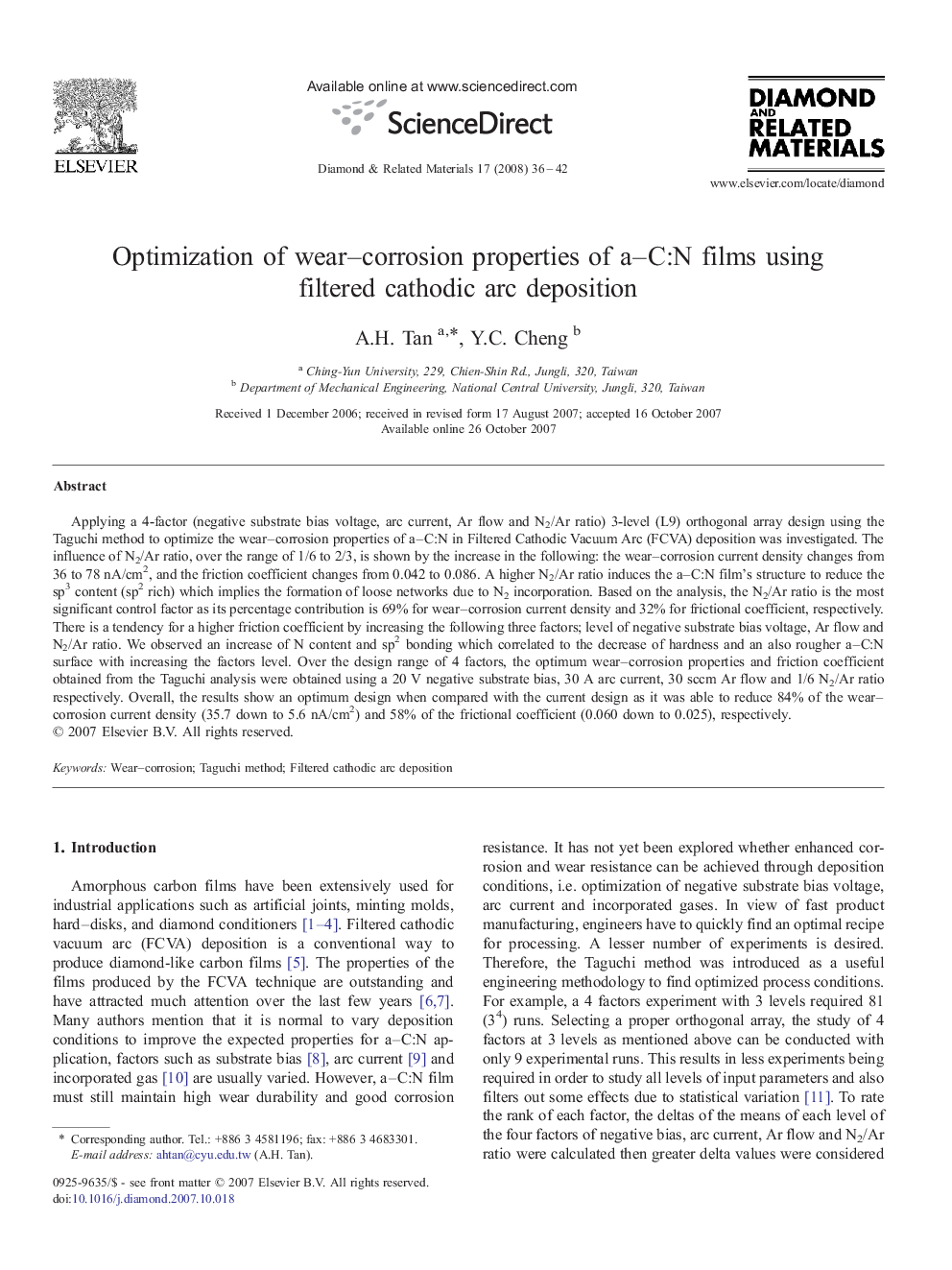| Article ID | Journal | Published Year | Pages | File Type |
|---|---|---|---|---|
| 703020 | Diamond and Related Materials | 2008 | 7 Pages |
Applying a 4-factor (negative substrate bias voltage, arc current, Ar flow and N2/Ar ratio) 3-level (L9) orthogonal array design using the Taguchi method to optimize the wear–corrosion properties of a–C:N in Filtered Cathodic Vacuum Arc (FCVA) deposition was investigated. The influence of N2/Ar ratio, over the range of 1/6 to 2/3, is shown by the increase in the following: the wear–corrosion current density changes from 36 to 78 nA/cm2, and the friction coefficient changes from 0.042 to 0.086. A higher N2/Ar ratio induces the a–C:N film's structure to reduce the sp3 content (sp2 rich) which implies the formation of loose networks due to N2 incorporation. Based on the analysis, the N2/Ar ratio is the most significant control factor as its percentage contribution is 69% for wear–corrosion current density and 32% for frictional coefficient, respectively. There is a tendency for a higher friction coefficient by increasing the following three factors; level of negative substrate bias voltage, Ar flow and N2/Ar ratio. We observed an increase of N content and sp2 bonding which correlated to the decrease of hardness and an also rougher a–C:N surface with increasing the factors level. Over the design range of 4 factors, the optimum wear–corrosion properties and friction coefficient obtained from the Taguchi analysis were obtained using a 20 V negative substrate bias, 30 A arc current, 30 sccm Ar flow and 1/6 N2/Ar ratio respectively. Overall, the results show an optimum design when compared with the current design as it was able to reduce 84% of the wear–corrosion current density (35.7 down to 5.6 nA/cm2) and 58% of the frictional coefficient (0.060 down to 0.025), respectively.
